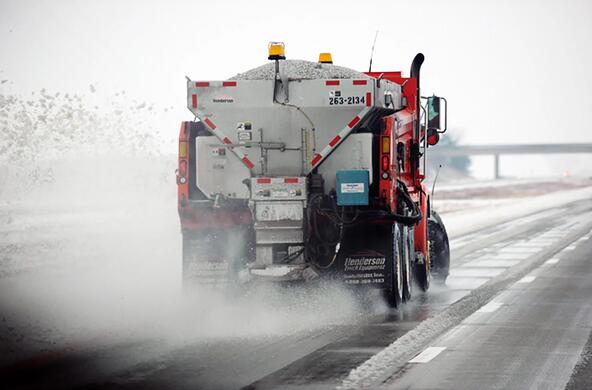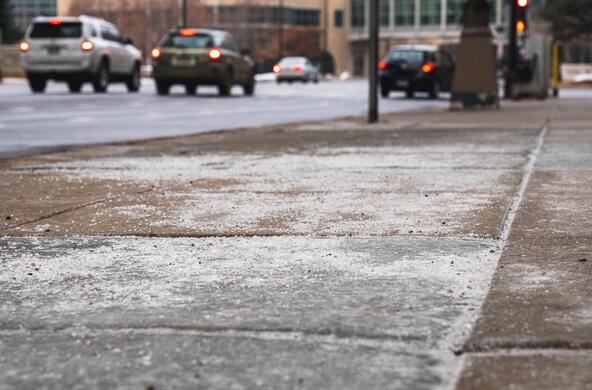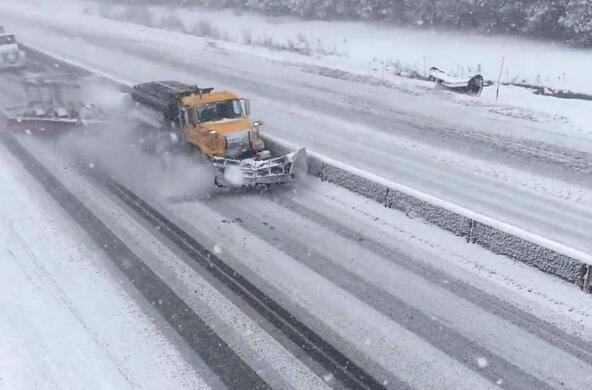Winter is slowly loosening its grip on the United States. In some regions, though, the repeated onslaughts of snow and ice over the past months have left behind a hefty residue in the form of salt—enough to push drinking-water supplies well over the EPA's advisory standard for people with diets that restrict sodium intake. In some places, it's even enough to produce a noticeably salty taste for consumers.
According to a report on NorthJersey.com, so much deicing rock salt has been applied to New Jersey's streets and roads this winter that sodium levels in some local drinking-water supplies are now at 108 milligrams per liter, five times the level recommended for people who need to limit their sodium.
This is not unusual. It's a regular occurrence—officials say the problem in Jersey isn't even quite as bad as it was this time last year. And it doesn't go away when the warm weather comes. In fact, salt levels can continue to rise well into the summer months, and the salt can persist for years in streams, reservoirs, and aquifers. Some water authorities have had to dilute their supply with cleaner water from other sources.
Victoria Kelly of the Cary Institute, an environmental monitoring group, told NorthJersey.com about how one water supply in Rhode Island is still dealing with salt contamination a decade after switching from sodium chloride to a less problematic mixture containing calcium chloride. "Even 10 years later, they were still seeing significant amounts of sodium in the water," she said. "It could be decades before the groundwater is flushed out."
The problem exists in the Washington, D.C., area as well, where scientists say they are seeing buildups in salt levels over a period of years. WTOP reported this week on how scientists are concerned about the cumulative effect of years of salt application on biodiversity as well as drinking water. "We've seen salinization of major drinking water supplies in Baltimore and Washington, D.C., where the salinity has been increasing over time, over decades," Sujay Kaushal, a geologist at University of Maryland, College Park, told WTOP.
Sprawl development and reliance on roads for most everyday transportation needs mean that salt has become an ever-more pervasive part of the American ecosystem, and municipal budgets. According to the American Association of State Highway and Transportation Officials, road crews use 10 to 15 million tons of salt every year in the United States. The Federal Highway Administration estimates all that road salt comes at a cost of some $2.3 billion. In areas that rely on surface water, the problem of salt contamination is especially worrisome.
Some jurisdictions are experimenting with more environmentally friendly alternatives, such as cheese brine, beet juice, and pickle brine. It's easy to see these as humorous novelties, but as the problem worsens in heavily populated areas, such new methods may increasingly be seen as common sense.
Another measure proposed by some advocates, including Kaushal, is that we need to be thinking more carefully about where we build new roads. That, of course, would require a far more radical shift than switching from rock salt to cheese brine.








